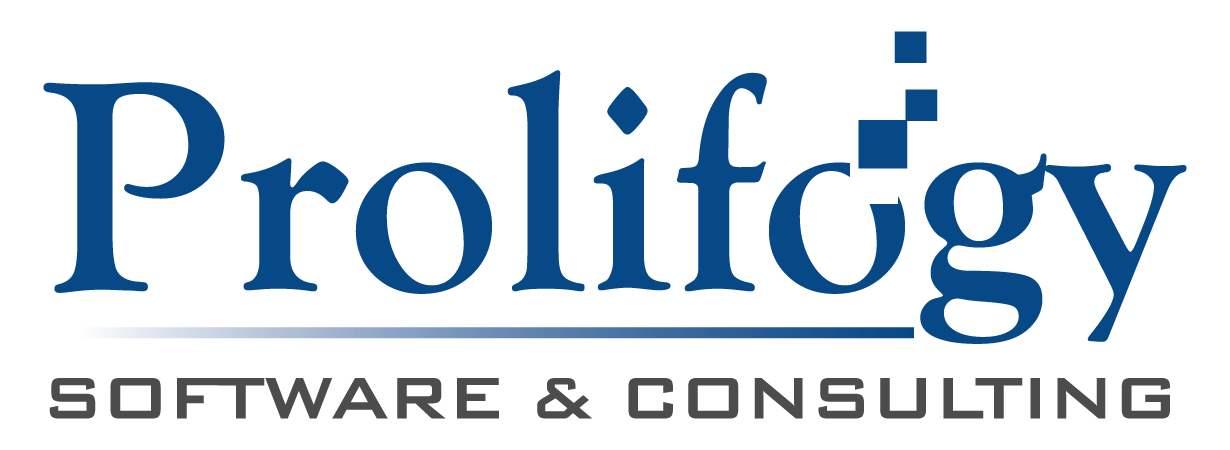The Cloud and Data Centers: How to Choose the Right Strategy
 “The cloud” has been a tech buzzword for a several years now, but many businesses aren’t sure exactly how to choose and deploy the right cloud strategy for them—or whether they should still utilize physical data centers. That’s where Prolifogy can help.
“The cloud” has been a tech buzzword for a several years now, but many businesses aren’t sure exactly how to choose and deploy the right cloud strategy for them—or whether they should still utilize physical data centers. That’s where Prolifogy can help.
Considering Cloud Computing
Cloud computing—using the Internet, rather than a local network of servers, to store, manage, and access your data—is all about paying for computing horsepower on demand instead of purchasing expensive hardware and paying for its upkeep. With the cloud, businesses can quickly scale up their storage and computing capacity during periods of peak demand and then scale down again when necessary. Payment is based simply on consumption, typically at hourly rates.
As such, cloud computing can be a very affordable approach for businesses of all sizes. For example, as new designs or products are developed, they can be brought to market sooner, without having to wait for investment in hardware. Then, if the idea takes off, the business can add new cloud computing resources on the fly to scale up to meet demand. On the flip side, if certain products are no longer going to be sold, the cloud computing measures for those products can simply be turned off and businesses aren’t left with expensive hardware that no longer has a purpose.
Data Centers Are Still Important, Too
Cloud computing has many advantages, but physical data centers are still an important aspect of maintaining a reliable network. A key benefit to consider is that you have much more control over your own physical data center, whereas with cloud computing, you are relying on your cloud provider to maintain your underlying infrastructure and connectivity. This control also comes into play when consider whether your business is ready for the automatic and consistent technology updates instituted by cloud providers.
Developing a Strategy
Between the endless flexibility and customization offered by cloud computing as well as the stability and personal control offered by physical data centers, there are a lot of options to review and many decisions to be made when developing the right strategy for your business. Prolifogy’s team of experts can help you navigate all the choices and complexities to formulate an approach.
Here are some of the key decision points Prolifogy can help with:
- Hybrid vs. “all-in”—Many companies maintain physical data centers while using the cloud to expand for peak capacity (hybrid), while others choose to go “all in” to the cloud, moving from capital expense to operating expense (CAPEX v. OPEX).
- Resiliency and redundancy—If your cloud provider is down, impacting your business’ website, what is your back-up strategy? To best utilize the cloud, you will need to determine how to make your websites resilient with fail-safe mechanisms as well as consider having redundancies in place with a physical data center.
- Scaling manually or on demand—One of the major benefits of cloud computing is that it can be used to increase your computing capacity for peak demands, and that can be done manually or on demand. For businesses that don’t need to scale up capacity often, a manual approach works well. For those that experience many peak periods through the year, on-demand scaling is important. Scaling on demand is a feature of some cloud computing vendors, which allows you to define metrics or thresholds on computing resources (like CPU utilization, memory usage, and network traffic) so that when these resources are going to be overloaded, the system adjusts its capacity automatically without human intervention.
- Long-term upgrade considerations—Cloud computing offers businesses access to the latest and greatest hardware without actually having to purchase it. This means cloud providers typically retire old hardware and automatically upgrade your equipment. While this can be a huge benefit, it’s also important to consider whether your business applications are ready for these continual upgrade leaps. Do you have the support and staffing needed to ensure a smooth transition? Do you need to make back-ups before your cloud provider updates their technology to ensure uninterrupted operation of your business?
- Security—Just like a physical data center, the cloud has a network, security rights to maintain, and so on. As you develop your cloud strategy, you’ll want to define naming conventions, who has access, and overall practices and protocols.
- Vendor(s)—There is a wide variety of cloud providers in the market, which offer a range of services. Some cloud computing companies are focused only on the bare-bones basics while others provide a full, rich set of features. Your business may also want to consider working with multiple cloud vendors for redundancy, a common approach. Prolifogy can help you determine if this is the right strategy for you, and if so, how to implement it.
Prolifogy has many years of experience using the tools and processes that are required in a cloud computing environment, so we are well-equipped to guide you through the options, help you select the right vendor, and analyze what kind of approach is right for your business. We also have extensive expertise with on-premise or hosted physical data centers and can guide you through all of the logistics, technical decisions, and scenarios that you need to know about before making a leap into the cloud computing space.
Let us help your business determine the right strategy. To get started, call us at (855) 776-5436 or use our Contact form.
